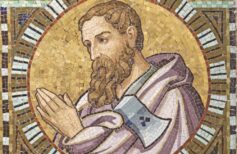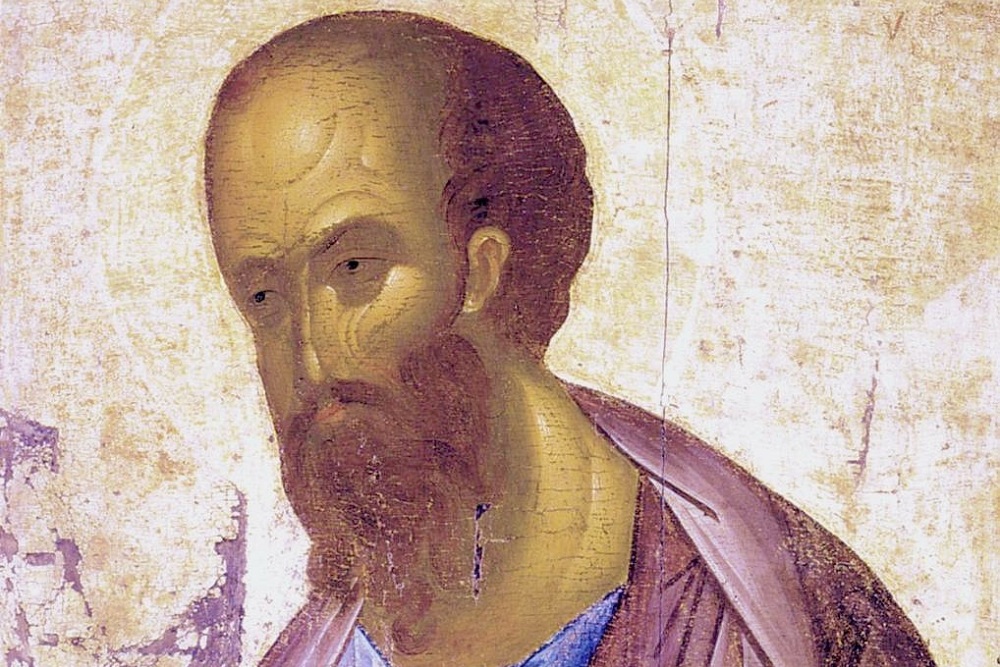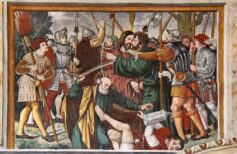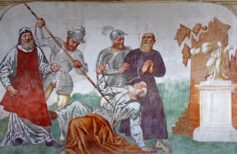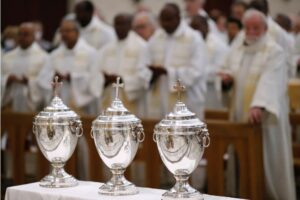Let’s talk about Saint Thomas, the doubting apostle, a devoted follower of Jesus and a great evangelist, often remembered more for his skepticism than his immense and solid faith.
Contents [hide]
Among the apostles who followed Jesus until His last days, there is one who is almost exclusively remembered for an episode that does not particularly honour him: Saint Thomas, the doubting apostle. In reality, Saint Thomas, whose name in Aramaic means “twin,” as does his Greek nickname Didymus, was an enthusiastic apostle full of great fervor. However, he was probably a bit pessimistic by nature and not very trusting. This is evident in nearly every passage of the Gospel where he is mentioned.
In John 11, for instance, the decision of Jesus to go to Bethany, where His friends Martha, Mary, and Lazarus live, is recounted. Lazarus is ill, and his desperate sisters have gone to seek Jesus’ help. Many in Judea hate Jesus, and His return to Bethany could be dangerous. Among the apostles’ various expressions of dissent, Thomas’s is certainly the most blunt. When Jesus urges the apostles to go because Lazarus has already died, Thomas responds, “Let us also go, that we may die with him” (John 11:16). It is a somewhat cynical reply, yet it does not prevent Thomas from following his Master and risking his life with Him.

Who were the 12 apostles and discover the difference between apostles and disciples
Who were the 12 apostles, companions of Jesus in the short span…
Thomas’s skepticism also emerges during the Last Supper, where he questions Jesus, despite being one of the least known apostles. In John 14, Jesus declares that He is going to prepare a place for everyone in the Father’s house. “You know the way to the place where I am going,” He says to the uncertain apostles. Here, Thomas voices what was probably everyone’s perplexity, though the others did not dare express it. “Lord, we don’t know where you are going, so how can we know the way?” It is almost amusing to imagine Saint Thomas as one of those friends present in every group, who participates in communal activities, never backs down, and is always ready to help, but who grumbles and objects to every proposal. This might have been his role among the 12 apostles.

The events of the Passion of Jesus: from the Last Supper to His Crucifixion
The Passion of Jesus is the highest and most terrible moment of his…
“Unless I See, I Will Not Believe”
Having met Thomas in the previous Gospel episodes, his behavior during Christ’s Resurrection becomes more understandable. Faced with his excited companions who recount seeing the risen Jesus, Thomas’s usual skepticism resurfaces: “Unless I see the nail marks in His hands and put my finger where the nails were, and put my hand into His side, I will not believe” (John 20:25). Eight days later, Jesus appears to the gathered disciples. Among them is Thomas, and Christ addresses him: “Put your finger here; see my hands. Reach out your hand and put it into my side. Stop doubting and believe” (John 20:27). At this point, Thomas has no more doubts and responds to Jesus, “My Lord and my God!” Jesus’ response (“Because you have seen me, you have believed; blessed are those who have not seen and yet have believed!“) does not show any bitterness towards this stubborn, distrustful, and perhaps slightly pessimistic friend. On the contrary, Thomas appears as an extremely human figure, close to each of us, symbolizing the doubts that lead to greater awareness and the uncertainty that nurtures faith.

The life of Mary after the Resurrection of Jesus
What became of Our Lady after the Resurrection of Jesus? Let’s investigate Mary’s life through the Gospels…
The Doubt of Saint Thomas
The episode of Saint Thomas’s Doubt has been the subject of countless artistic representations. The iconography of this saint is quite varied. Traditionally, he was depicted with a book, a common attribute for all the Apostles, or with a sword or a lance, the weapon with which he was killed, and the palm, symbolizing martyrdom. However, in other depictions, he is seen with an architect’s square. Saint Thomas is, among other things, the patron saint of architects and surveyors, as well as of India and Pakistan. According to legend, the king of India gave him the architect’s square (or olive rod) after Thomas miraculously traced the plan of the royal palace. Since then, the square has become one of his iconographic attributes.

Another scene featuring Saint Thomas, recurrent in sacred art, comes from the apocryphal gospels. Thomas, ever skeptical, did not want to believe in the Assumption of Mary. To convince him, the Madonna appeared from heaven and threw her belt to him.
Returning to the scene of doubt, it was famously depicted by the Italian painter Caravaggio in an oil painting created between 1600 and 1601, displayed in the Bildergalerie in Potsdam. The painting, with Caravaggio’s sublime style and the play of light and shadow that distinguished his work, captures the exact moment when Thomas verifies the wounds on Jesus’s body.
Saint Thomas and His Evangelistic Work
Saint Thomas was also a great evangelist, traveling to Syria, Persia, India, and China. After being in Syria and evangelizing Edessa, he moved to Babylon in Mesopotamia, where he founded the first Christian community and stayed for seven years. He then went to India, where he interacted with Jewish communities and made converts, and from India, he traveled to China. It was upon his return to India that he met his martyrdom in 72 AD, killed by a lance (or sword) blow on the orders of King Misdaeu.

Gospel of Saint Thomas
An apocryphal Gospel of Saint Thomas has also come down to us. This Coptic text does not recount the life of Jesus as the canonical Gospels do, but rather collects His sayings. It is important to note that apocryphal gospels, often fragmentary, are later than the apostolic age and have not been recognized as canonical by the Church’s magisterium. Linked to the emergence of early Christian communities, they were written to delve into topics raised by the canonical Gospels and to provide additional information about the life of Jesus and those who knew Him. In the Gospel of Thomas, the Kingdom of God is already on Earth, visible only to those willing to be enlightened by the divine light present within each of them. For a chronic pessimist, that doesn’t seem like a bad premise!

The apocryphal gospels: what differentiates them from the canonical ones
The apocryphal gospels are not part of the New Testament…




